|
Disease & Epidemiology Palinopsia refers to a pathological group of visual symptoms in which there is an abnormal persistence or recurrence of an image in time. Palinopsia derives its name from the Greek word palin which means "again" and opsia which means "seeing.” Palinopsia is distinct from a physiological after-image, which is a benign, normal response in which an image briefly persists after a person has stopped looking at the original visual stimulus. Images from palinopsia are longer-lasting and more intense than physiological after-images. Whereas physiological after-images appear immediately after removal of the original visual stimulus, palinopsia after-images may appear immediately or after a time interval. Images from palinopsia are positive images, or the same colors as the original visual stimulus, whereas physiological after-images are negative images, or complementary colors of the original visual stimulus. Palinopsia can be categorized into two general categories: hallucinatory palinopsia and illusory palinopsia. Individuals with hallucinatory palinopsia see images that are long-lasting, high-resolution, and occur anywhere within the visual field. Individuals with illusory palinopsia see images that are affected by immediate environmental factors, such as light and motion. The images from illusory palinopsia are short-lasting, low-resolution and indistinct. There is limited data on the epidemiology of palinopsia. Palinopsia may occur in up to 10% of migraineurs and seem to occur more frequently in migraine with aura than without aura. Although migraines occur more frequently in females than males and more frequently in younger to middle aged populations than elderly populations, there have not been significant studies done comparing palinopsia between the categories. Original article contributed by:
Angela Huang, Aroucha Vickers, DO, Claudia Prospero Ponce, MD Link to full article click here The authors write a very comprehensive review of palinopsia, which is the persistence or recurrence of a visual image after the stimulus has been removed. They comment on visual snow, epileptic discharges, release phenomena, medications and illicit drugs, in addition to visual trailing, migraine and light streaking. This is a must-read for anyone interested in palinopsia.
Feb 02, 2015 By Michael Vaphiades, DO Neuro-Ophthalmology/Orbit Full article click here Marissa Grande, Lucas Lattanzio, Isabelle Buard, Allison M. McKendrick, Yu Man Chan and Victoria S. Pelak
Background: Visual Snow (VS) syndrome is believed to be due to aberrant central visual processing. Positron Emission Tomography (PET) brain imaging and visual evoked potential studies provide evidence for excessive neuronal activity in the medial temporal lobe, specifically the lingual gyrus, and suggest the VS syndrome is a hyperexcitability syndrome. These data provide the basis for consideration of repetitive transcranial magnetic stimulation (rTMS) as a potential treatment for the VS syndrome. Objective: To publish the study protocol for a pilot study underway at the University of Colorado School of Medicine to investigate the use of rTMS intervention to improve symptoms and visual dysfunction associated with VS. The study aims to determine the adverse events and drop-out rate, evaluate performance of outcome measures, including a novel VS symptom scale, and describe changes in outcomes associated with treatment. Methods and Design: Up to 10 participants meeting criteria for VS syndrome, age 19–65 years, will undergo an open-label intervention consisting of 10 rTMS sessions, occurring 5 days a week over a 2-week period. Participants will complete pre-treatment and post-treatment assessments that include: the Colorado Visual Snow Scale (CVSS), the National Eye Institute Visual Functional Questionnaire—25 (VFQ-25), the General Anxiety Disorder—7 scale (GAD-7), and three psychophysical visual processing tasks. Discussion: Knowledge gained from this pilot study will inform future study planning and provide valuable lessons for future investigation of rTMS for the VS syndrome. An overview of study proceedings thus far demonstrates recruitment challenges associated with the COVID-19 pandemic, and additional challenges that are unique to the VS syndrome and to treatment schedules associated with TMS. Registration: This study has been approved by the Colorado Multiple Institutional Review Board. ClinicalTrials.gov Identifier: NCT04925232. Full Study Protocol Click Here or click below to download the PDF
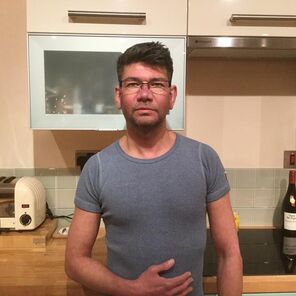 My name is Stuart Major, I am a UK citizen living in Cheshire. I can remember at the age of 23 coming down with some kind of virus that laid me up for about a week. All my senses were affected by this which seemed normal at the time. When I got over this, everything returned to normal apart from my vision which still retained a grainy/static condition to it. (This also included poor night-time vision). I went to my GP and tried to explain what I was experiencing, but it was so hard to try and explain. They tried a number of things over a duration of months/years and in the end held their hands up and said “Sorry, we give up, we can’t think of anything else to try and we don’t know what it is you have”. After a while, I became accustomed to this experience (I couldn’t work as an Illustrator/Artist any longer) and learned to live life normally with this, sometimes forgetting about it for days, I was happy-ish again. This stayed constant not getting worse or better. Many years later at the age of 48, I noticed that the static got worse, along with this I developed tinnitus, dizziness, floaters, after images, brain fog and a constant pressure in my head. Not thinking this was related I went to the GP again who intern sent me to an Ophthalmologist/Neurologist who couldn’t find anything wrong with me after many tests/scans. By this time I was suffering from depression and was in a dark place as I now had a wife, a teenage son and a demanding job and was worried that I couldn’t keep on top of things! Around this time I went for an annual standard eye examination at the optician which was normal. Then the Optician asked me if there was anything with my vision that I wanted to discuss. I just thought that I would mention the grainy vision that I had had for many years now. Their reply was “This sounds a bit like a new condition that the medical field have now acknowledged called Visual Snow”. I immediately went back to the office and ‘Googled’ this and ‘EUPHORIA’!! I had finally found out what I was suffering from and that it was a condition with a name and there were others going through this (which was kind of comforting – not in a horrible way). I have managed to become a patient of a Neurologist who has written articles on VSS and am currently being trialled on different treatments. I am so happy to now see so many organisations out there globally now fighting our coarse and looking for funds to try and find a treatment/cure for VSS and great progress has been made with regards to the area of the brain the hyperactivity is coming from and I honestly think that we shall get there soon!...........So please stay strong and let’s hope for a happy 2022! 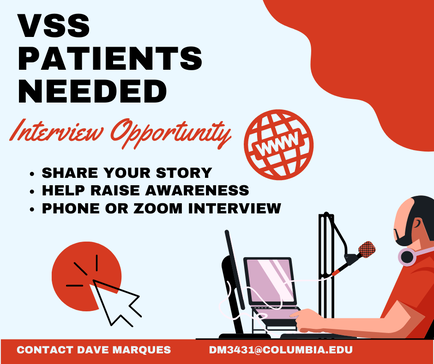 VSS PATIENTS NEEDED Here is a message from Dave Marques He can be reached via email dm3431@columbia.edu Hi, I'm a master's student at Columbia Journalism School and for my capstone project (our equivalent of a thesis) I'm writing a ~5000 word magazine feature on visual snow. It will largely be a personal narrative, but substantially interspersed with interview and research material. I myself have visual snow syndrome (since June 2019) and would love to speak with others about their experiences with VSS - symptoms, adaptation strategies, etc. If you feel comfortable sharing your story, I would love to hear from you! There is very little coverage of VSS in the press and I hope to bring the condition to the wider public's attention. (Two things to note up front: (1) I am planning to pitch the piece to a mainstream media outlet once it's complete; (2) I will need to use your first and last names in the article. I unfortunately cannot use pseudonyms, initials, first name only, or anonymous attribution). If you're interested, send me a PM and we can set up a time to talk. Zoom is preferable, but a phone call is fine as well. (If you are in New York City, meeting in-person outdoors is also an option but definitely not an expectation!). Dave Marques can be reached via email dm3431@columbia.edu ARTICLE SUMMARY Binocular vision dysfunction (BVD) encompasses a group of conditions where the two eyes have difficulty working together as a team, resulting in a vertical or horizontal (or both) misalignment between the line of sight of one eye with the other eye. Subtle vision misalignment can be congenital/spontaneous or precipitated by a brain injury/concussion, and has many non-visual symptoms including dizziness and other vestibular symptoms, headache, neck ache, anxiety, and difficulty reading. There has made little progress in identifying and treating this condition, most likely because the standard vision alignment tests are not sensitive enough to find these subtle misalignments. To read the full article, please click here to go to VeDA's website or download the PDF below.
My name is Matthew and I suffer from visual snow syndrome (VSS). I work as a research scientist and am from New York! I have suffered from VSS since 2008 when I was 17/18 years old. Right around my 18th birthday I noticed a large dark floater in my left eye. I thought I was going blind or something very serious was going on. The floater slowly got bigger, darker, and longer until it stretched across my entire visual field in my left eye. Then, I noticed the ringing in my ears (tinnitus). Then the static/snow and Blue Field entopic phenomenon set it and was noticeable against solid surface, in the dark, and against the sky. I slowly noticed my night vision worsening as well. Many folks believe they know what triggered their VSS. A certain medication they took, an illness they had, a drug they tried. I do not know for certain, but my best guess is that my symptoms started after a bad migraine with aura. I suffered with Migraines as a teenager and had one at least once every few months. I continue to suffer with migraines to this day.
When it all first started, I visited every type of doctor you can imagine. I saw a primary care provider, optometrist, neurologist, retina specialist, ophthalmologist and a neuro-ophthalmologist, etc. The list goes on. No one could tell me what was going on and no one at this point had really heard of VSS. Medical care providers accused me of having anxiety, making it up, doing drugs and lying about doing drugs. It was very disheartening to be treated in such a way when I was just looking for support and trying to figure out what was going on with my health at such a young age. I had numerous test performed including CT scans, MRIs, MRIs with contrast, and EKGs. Fast forward 5-6 years to my senior year of college and I noticed some of my symptoms seemed to be worsening and there were some new ones. I now saw slight trails off of bright lights and surfaces, I saw after images when looking away from objects, my night vision continued to get worse, and I noticed it was very difficult to see in low light settings and my static was getting denser. At this point I started to do my own research again and I stumbled on a large community of folks that seemed to be experiencing similar symptoms and having similar issues getting a diagnosis. That is when I first learned the term “visual snow.” It was strangely comforting to finally be able to out a name to the condition and at least some sort of explanation as to why I had been experiencing these strange sensations and visual disturbances. Thankfully I was referred to the Flaum Eye Institute in Rochester NY and was seen by a world-renowned Neuro-Ophthalmologist. I had every eye exam and test you can dream of and everything came back normal. After extensive examination the Dr. officially gave me my first diagnosis of visual snow syndrome. She said it was rare, nobody understood what caused it or how to treat it, but she assured me I would not go blind. It was amazing to not be dismissed by a medical professional and actually get a diagnosis. From there, I mostly learned to live with my condition. I finished college, worked in the private sector, went to graduate school. I have an amazing career, a wonderful girlfriend, supportive friends, family and pets I love very much. My symptoms stayed relatively stable from that point forward until this Fall. I had two migraines after exercising within the same month and since then my symptoms have continued to worsen and deteriorate. My floaters have exploded and exponentially increased every day since, my static is much denser, my low light vision has gotten significantly worse, my night vision is worse, my tinnitus is louder, I have on and off headaches, I see afterimages more often and for longer periods of time, reading dense text in a book or on a screen is very difficult because the words shimmer, shake, and move around (this actually makes me nauseous), I have extreme light sensitivity (fluorescent lights are extremely difficult and can cause migraines), digital screens are very hard for me to look at (televisions, computers, smartphones, etc.) and I have to make extreme adjustments to use them on a daily basis for work and for pleasure. I am unable to watch tv or use computer or phones in the dark as the contrast really seems to set my symptoms off and it is too harsh for me to look at. I also now see orbs and arc of light throughout my visual field throughout the day (I believe these are pressure phosphenes) and they can be really strange and distracting. I have bouts of extreme fatigue, brain fog, confusion, forgetfulness, anxiety and depression. It is extremely hard living with a chronic illness, let alone one that is a mystery and has no treatment, cure, or official prognosis. Until the pathophysiology of the condition is understood I am stuck living with a very messy visual field. I have made adjustments for now and am surviving. I have multiple pairs of glasses with different types of filters to help with certain lighting situation and so digital screens are not so harsh on my eyes and do not cause headaches. I have special filters applied to my work and personal computers. I require the brightness to be turned down and night mode to be turned on for all of my digital devices so I can read them without getting a headache and or nauseous. Reading books is also very difficult but I have found certain colored pages and the right bright, white, cool light make it manageable. I really enjoy reading books, so it has been really important to me that I am able to make adjustments to do so. Many of my hobbies were negatively affected by this condition but I am learning to make adjustments and enjoy them the best I can. Invisible chronic illness is extremely difficult for many people to understand and even difficult for the medical community to understand how negatively it effects my day-to-day life 24/7-365. I just hope with advancing technology and more awareness better days are on the horizon. I hope I live to see the day where folks in the VSS community are able to receive treatment that at least provides some form of relief. Thanks for listening to my story! Hi, everyone, my name is Mujjo I am a Music composer, record producer, singer, and songwriter from east India. I remember when I got my first symptoms of VSS when I was suffering from typhoid in the year 2018.
It all started with static, floaters, flashes in my entire field of vision and slowly it got worsened! I also suffered severe migraines. Once my typhoid medication got done my vision problems began to fade away, only mild static & floaters remained but flashes went away. Fast forward to the 7th of November 2021, I had been diagnosed with typhoid again which was caused as the result of an increase in the amount of WBC, reduction in calcium, Tinnitus (a high-pitched ringing in my right ear 24/7). VSS flashes hit me back even stronger than before & I thought I am going to be blind permanently! I was feeling very anxious! This situation turned me into a very emotional person, every day I woke up with this static that would make me depressed! All I felt was as if I was watching my life on a Television set! I am not able to see the sky clear as before in daytime. It is manageable, but the nights are problematic since the VSS flashes make it way too difficult to deal with it. After an appointment with an eye doctor, I went through numerous eye check-ups. I came to know my eyes are 100% normal. Later I was diagnosed with VSS at first it was difficult for me to accept that there is no cure or medication for it but I started to think about the people who are blind at least I am not blind I just see the world from a different perspective & I accepted it as part of my life and moved forward. Trust me things got better! The people who are going through this silent disability it's important to know that you are not alone it's hard but once you accept and stop worrying about it & brain starts to tune it out, now I live my life normal like before, I cope with VSS and Tinnitus with help of early sleeping habits and proper diet and morning meditation, yoga, and stretching exercise and more water in-take and along with help of music. As a music artist, I have to work on a lot of music projects, so it keeps my mind busy at work and keeps me away from anxious thoughts so definitely music is the best healer! A normal life with VSS is 100% possible I hope in the future a cure will be found stay strong! 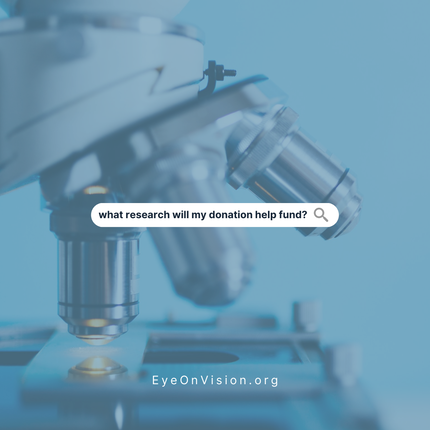 Associate Professor Jo Fielding and team at Monash have expressed their sincere gratitude for every dollar someone donates to this research. They feel that there is a great need to understand the underlying cause of Visual Snow so we know precisely what is causing it and what are effective treatments to eliminate or sustainably relieve the patient's condition. Without funding, the work stops as allocated staff needs to work on other funded projects not related to Visual Snow, as scanning and analysis services are costly. Using a novel assessment of ocular motor (OM) function, my group has identified for the first-time world-wide a unique OM signature of visual processing changes in VSS, from which we hope to develop a means to assist with diagnostic certainty and a means to measure the efficacy of any future treatment. However, determining effective treatments depends crucially upon understanding a disorder’s underlying neuropathology. Here, our OM signature may serve another important role – providing a quantifiable behaviour that may be interrogated using in vivo neurophysiological techniques. THIS RESEARCH: will investigate the mechanism of disruption in VSS using measures of brain function while the brain is at rest and while actively processing and responding to visual information. This will be guided by our unique VSS OM signature and previously proposed changes to thalamo-cortical processing]. Broadly speaking, the thalamus is a set of nuclei located at the centre of the brain that relays sensory information to the outer layers of the brain (cortex). Aim 1. Characterise thalamo-cortical processing changes in VSS using resting state electroencephalography (EEG) and functional magnetic resonance imaging (fMRI). I have commenced the MRI arm of this study, collecting high resolution anatomical and resting-state fMRI data for >40 VSS patients using a Siemens 7 Tesla MRI. Preliminary analyses reveal widespread changes in neuroanatomy and network connectivity. Using EEG, my group will explore whole brain electrical changes consistent with thalamo-cortical changes. Aim 2. Identify functional changes between the thalamus and cortex using task-based EEG and MRI guided by our unique VSS OM signature. These studies will be task based, specifically exploring changes in brain activation while patients engage in the OM tasks that underlie characterisation of our VSS OM signature. |
UpdateRecent update on research. Archives
November 2023
Categories |
||||||||||||


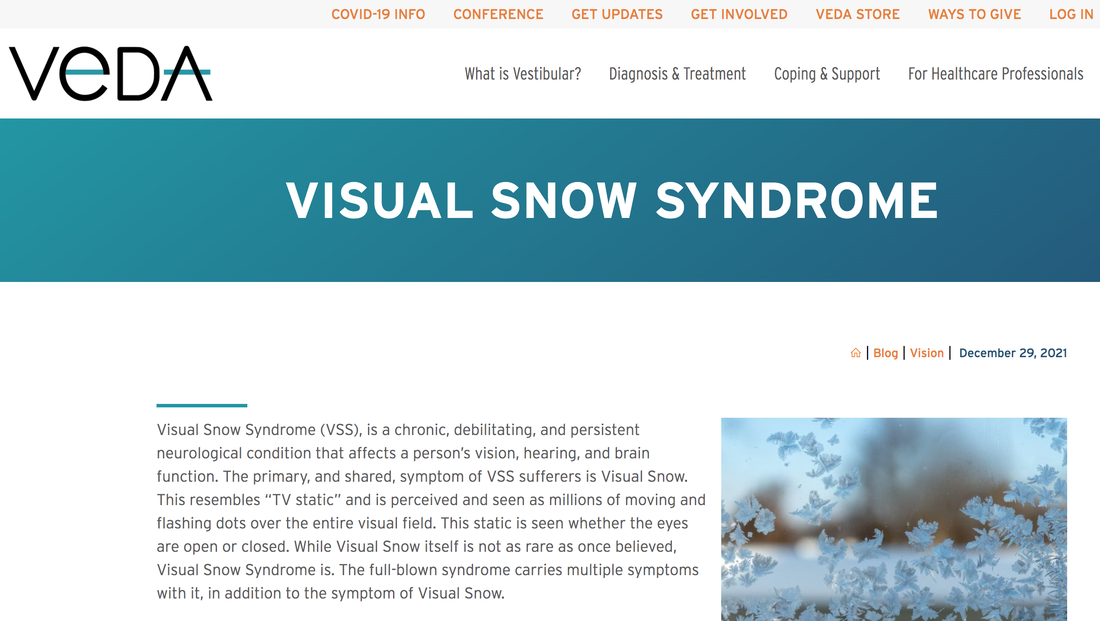
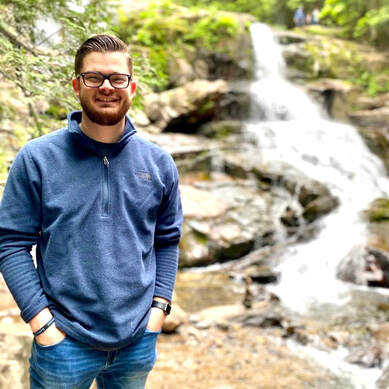

 RSS Feed
RSS Feed
